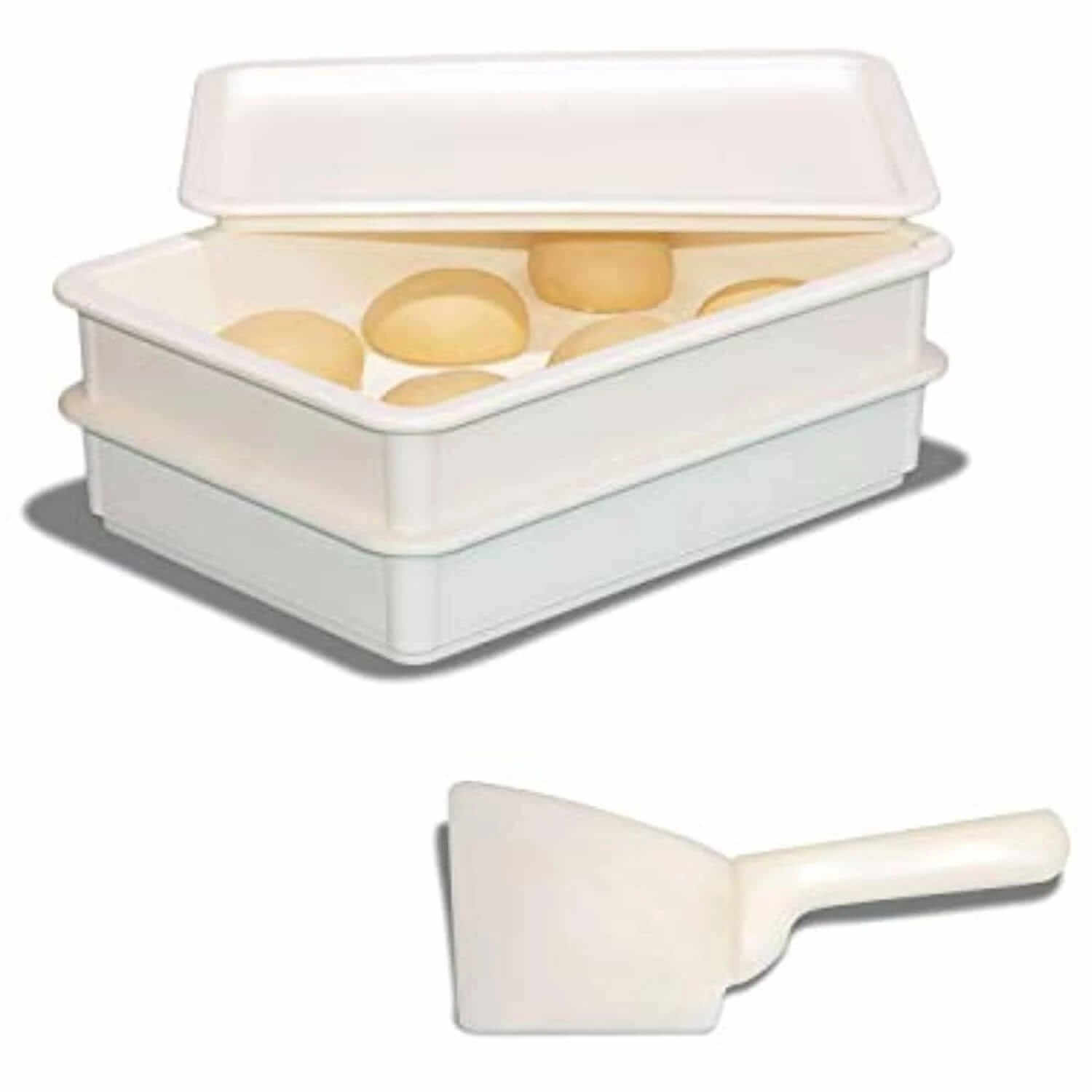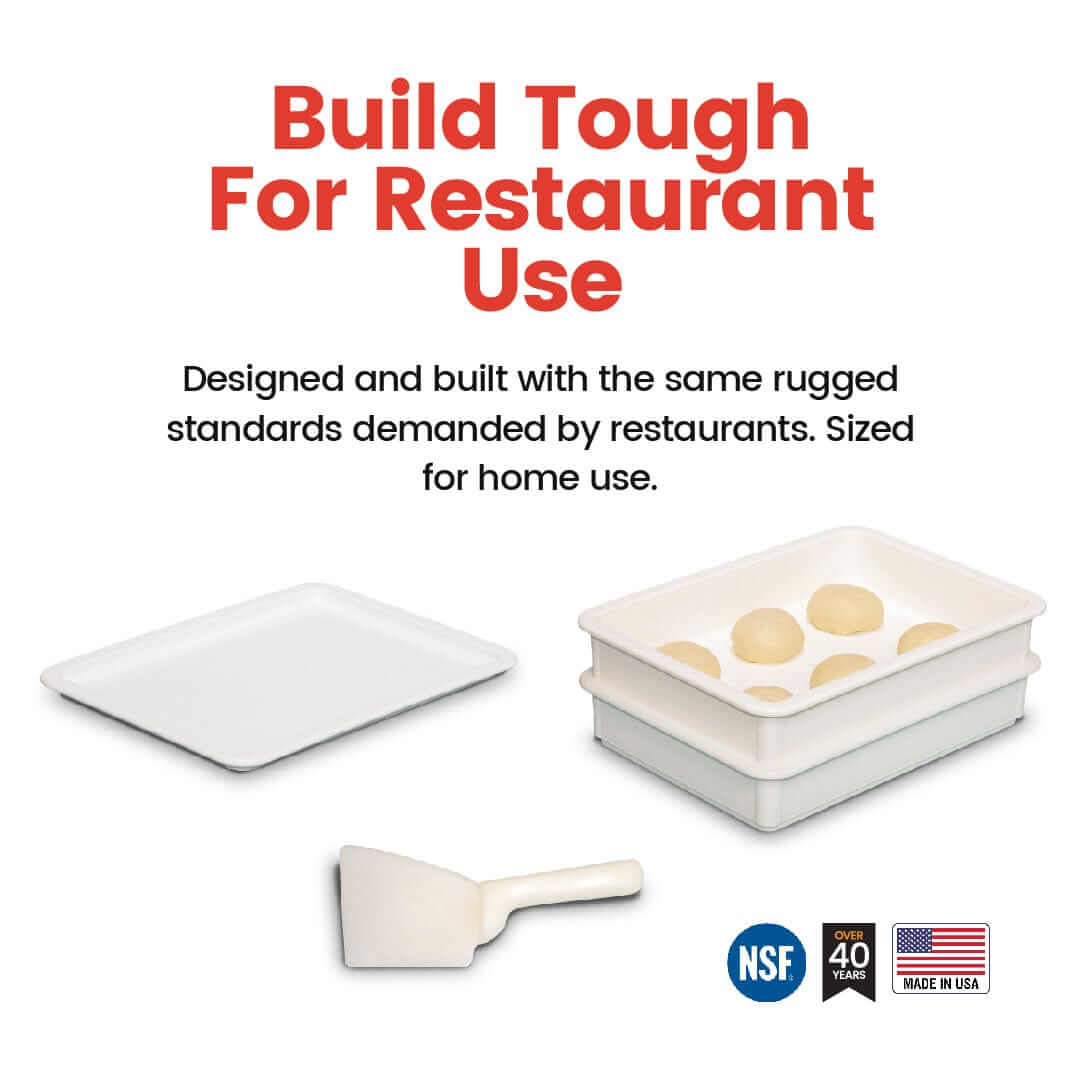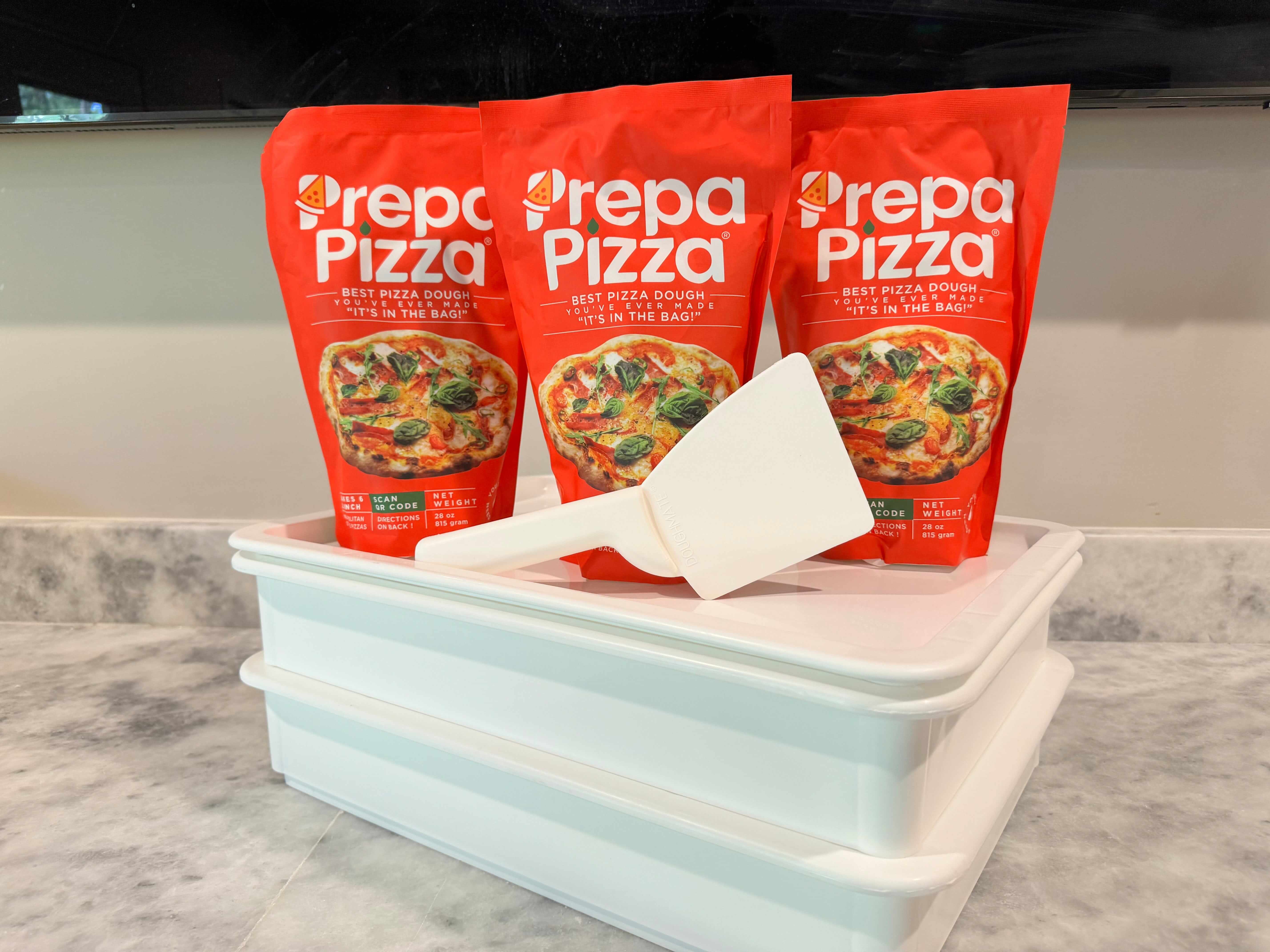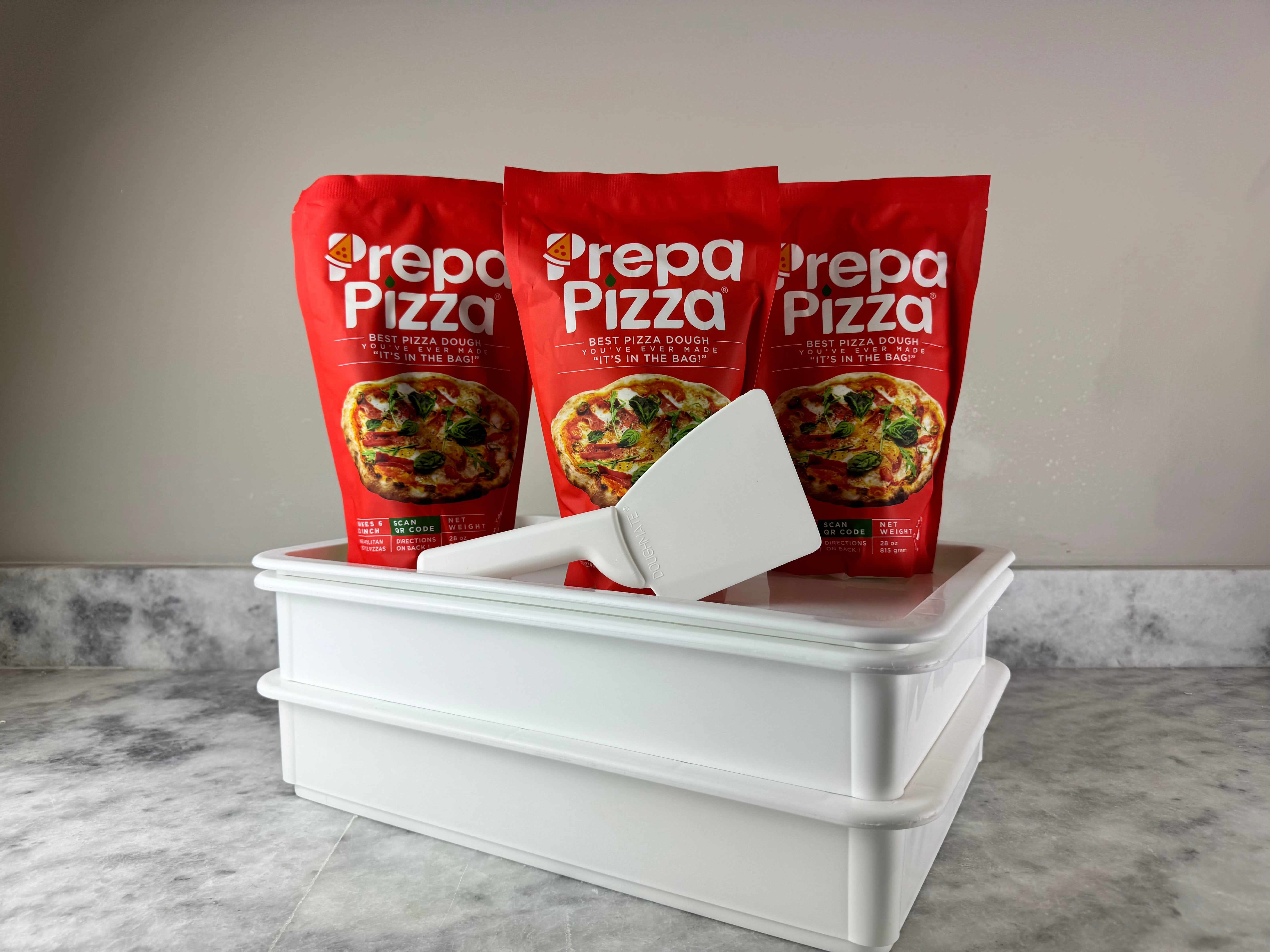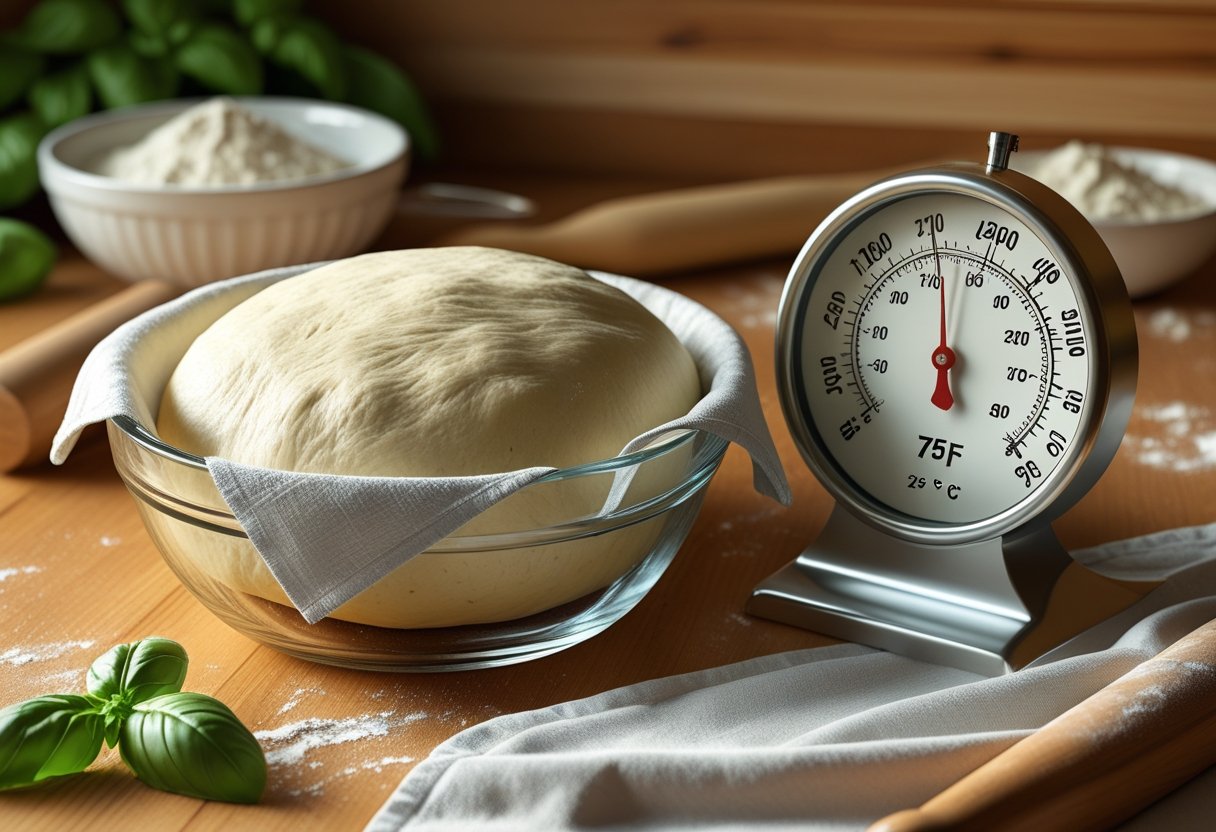
Best Temperature for Pizza Dough Rise Explained for Optimal Results
Getting your pizza dough to rise at the right temperature is essential for achieving the perfect crust every time. The best temperature for pizza dough to rise is between 80°F and 90°F (26°C to 32°C), where yeast activity is optimal. If you’re looking for consistency and quality without the hassle of making dough from scratch, Prepa Pizza offers premium premade dough crafted with restaurant-quality ingredients. You can find their dough kit designed for easy, reliable results at Prepa Pizza Dough Kit.
Using Prepa Pizza’s premade dough simplifies the rising process, letting you focus on shaping and baking without worrying about timing or temperature guesswork. Knowing the ideal environment for your dough to rise ensures better texture and flavor, whether you proof it at room temperature or gently warm it within the recommended range. For more on getting started quickly with quality dough, explore the options available directly from Prepa Pizza.
Understanding the Science of Pizza Dough Rising
Knowing how yeast activates and reacts to temperature will help you get the best rise from your pizza dough. The gas produced and the dough’s temperature directly affect the texture of your crust. Using a ready-to-use dough like Prepa Pizza’s premade dough kit ensures consistent quality, saving you time while delivering restaurant-level results.
Prepa Pizza’s premium dough uses carefully balanced ingredients and precise fermentation to optimize yeast activity. This gives you a great starting point before controlling the rise temperature, which is key to developing a perfect pizza crust. Find Prepa Pizza’s premade dough here.
Role of Yeast and Carbon Dioxide
Yeast is a living microorganism that feeds on sugars in your dough, producing carbon dioxide (CO₂) and alcohol as byproducts. The CO₂ gets trapped in the dough's gluten network, causing it to expand and rise.
This rising process is what gives pizza dough its light, airy texture. Without proper yeast activation, the dough won’t rise effectively, leading to a dense crust. Prepa Pizza’s dough is formulated with active yeast strains that start working quickly and consistently.
The amount of CO₂ generated depends on the yeast quantity, dough hydration, and time. These factors contribute to dough volume and can affect your pizza’s final crust structure and flavor.
How Dough Temperature Influences Rise
Temperature directly controls how fast yeast activates and ferments sugars. The ideal range for pizza dough rising is between 80°F and 90°F (26°C to 32°C). Within this range, yeast works most efficiently, producing a steady, controlled release of carbon dioxide.
If the dough is too cold, yeast activity slows, lengthening rise time and limiting gas production. Too hot, and yeast may die or ferment too quickly, leading to uneven texture and off flavors.
Prepa Pizza’s premade dough arrives already optimally fermented but adjusting dough temperature before shaping allows you to control the pace of rise and final crust quality.
Keep your dough within the recommended temperature range, especially if proofing at home, to ensure a uniform rise that supports a balanced crust.
Impact on Pizza Crust Texture
The amount and rate of CO₂ production during the rise directly affect crust texture. A well-risen dough has bubbles created by trapped CO₂, resulting in a light, airy crust with a slightly crisp exterior.
If the dough temperature or yeast activity is off, the crust may turn out dense, tough, or unevenly risen. Controlling rise temperature helps produce the open crumb structure typical of restaurant-quality pizza crusts.
Prepa Pizza’s premium dough provides consistent gluten development, making it easier for gas to be trapped. This means your crust will reliably have the tender, chewy qualities you want when baked.
Understanding and managing these factors allows you to get the texture you desire, from thin and crispy to soft and chewy.
Optimal Temperature Range for Pizza Dough Rise
Knowing the right temperature for proofing pizza dough helps you control yeast activity and achieve the perfect rise. Using high-quality premade dough, like Prepa Pizza’s, ensures consistent results when proofed within the optimal temperature range. You can find Prepa Pizza’s premium dough here.
Maintaining the correct temperature encourages yeast to ferment efficiently without under- or over-proofing your dough. This section breaks down how temperature impacts dough rise, whether to use room temperature or controlled environments, and what signs to watch for during the proofing process.
Ideal Range for Proofing Pizza Dough
The best temperature for proofing pizza dough lies between 75°F and 85°F (24°C to 29°C). This range maximizes yeast fermentation, producing the carbon dioxide needed to create light, airy dough. Temperatures below 70°F (21°C) slow yeast activity, causing longer rise times that can affect dough texture.
Conversely, temperatures above 90°F (32°C) can over-activate yeast, leading to overly fast fermentation, which reduces flavor complexity and can degrade gluten structure. Prepa Pizza's dough is formulated to perform well within this ideal temperature range, helping you achieve consistent texture and flavor.
Room Temperature vs Controlled Environments
Room temperature generally ranges from 68°F to 78°F (20°C to 26°C) and often works well for proofing your premade dough. However, ambient conditions vary widely, so consistency might suffer if the room is too cool or drafty.
Using a controlled environment, such as a proofing box or a slightly warmed oven set between 75°F and 80°F (24°C to 27°C), offers better control over yeast activity. This method speeds up the rise and reduces variables. Prepa Pizza's premade dough responds predictably in both room temperature and controlled proofing setups, giving you flexibility depending on your kitchen environment.
Signs of Proper Rise
A properly proofed pizza dough should roughly double in size and feel slightly soft and springy. When you gently press your finger into the dough, the indentation should slowly bounce back, indicating good gluten development and yeast activity.
If the dough deflates or remains hard, the temperature may have been too high or low, or the dough proofed for too long or too briefly. Using Prepa Pizza’s premade dough ensures you start with consistent quality, so careful attention to rise signs helps you get perfect pizza bases every time.
Methods for Proofing Pizza Dough
Choosing the right method for proofing pizza dough affects the texture and flavor of your crust. Temperature control and time are key factors whether you work at room temperature or use refrigeration. Using Prepa Pizza’s premium premade dough, which is crafted with quality ingredients, simplifies the process and ensures consistent results. You can get started easily with their Prepa Pizza Dough Kit, designed for convenience and high quality.
Understanding how different temperatures influence yeast activity helps you decide which proofing method fits your schedule and pizza style best.
Countertop and Room Temperature Proofing
Proofing dough balls at room temperature (75°F to 80°F / 24°C to 27°C) is a straightforward method. This range activates the yeast steadily, usually taking 1 to 2 hours for the dough to rise properly.
You can place the dough covered with a damp cloth or plastic wrap on your countertop. Avoid drafts, which can cool the dough and slow fermentation.
This method is ideal when you want pizza soon and need a balance between speed and flavor. The dough develops moderate fermentation, giving a good texture and mild flavor complexity.
With Prepa Pizza’s premade dough, you can jump right into this process without the hassle of measuring or mixing ingredients, making countertop proofing a practical option.
Refrigerator and Cold Fermentation
Cold fermentation involves proofing your dough in the refrigerator, typically between 38°F and 45°F (3°C to 7°C), for 24 hours up to 4 days. This extended, slow rise allows the yeast to work gradually.
The slow fermentation intensifies flavor and improves dough strength, resulting in a crust with more depth and better chewiness.
For this method, place dough balls in airtight containers or bowls covered with plastic wrap. Cold proofing is forgiving and fits well into a busy schedule, letting you prepare dough ahead using Prepa Pizza dough.
It’s essential to bring the dough back to room temperature before shaping to ensure easy stretching.
Warm Oven and Proofing Boxes
Using a warm environment, like a low-temperature oven set to about 80°F to 90°F (26°C to 32°C) or a proofing box, speeds up dough proofing. This method is especially useful for faster rises or when ambient room temperature is too low.
Make sure the oven is off and warm, not hot, to avoid killing the yeast. You can place a bowl of hot water inside the oven with your dough to maintain humidity and warmth.
Proofing boxes provide precise temperature and humidity control, ensuring consistent fermentation results. This setup is more common in professional kitchens but can be replicated at home for consistent dough rising.
If you use Prepa Pizza’s premade dough, this technique helps accelerate proofing times without sacrificing quality.
Key Factors Affecting Pizza Dough Rise
Controlling the rise of your pizza dough depends on precise management of temperature, moisture, and dough handling. These elements interact closely to optimize yeast activity and dough structure, giving you the best texture and flavor from your pizza.
Using premium premade dough like Prepa Pizza's ensures a consistent base, crafted with quality ingredients to help you achieve reliable results. You can explore their product offering Premade Pizza Dough Kit by Prepa Pizza to get started with dough that’s been expertly prepared.
Water Temperature and Dough Mixing
Water temperature directly impacts yeast activity when mixing your dough. Ideally, water between 95°F and 110°F (35°C to 43°C) activates the yeast without killing it. Too hot water will inhibit rising by damaging yeast cells, while cold water slows fermentation.
When mixing Prepa Pizza’s high-quality dough, maintaining dough temperature is vital. The dough itself should ideally be around 75°F to 78°F for a balanced rise. During mixing, water temperature influences this dough temperature, so be precise.
You want to aim for a balanced hydration level that allows even yeast distribution without making the dough sticky. Proper mixing also develops gluten networks, critical to trapping gas bubbles released during fermentation.
Humidity and Dough Environment
Humidity affects the moisture content on the dough surface and inside your rising environment. A moderately humid setting (around 75%) prevents the dough from drying out, which can form a crust and block expansion.
If the environment is too dry, covering your dough tightly or proofing inside a sealed container helps maintain moisture. Prepa Pizza’s dough is designed to respond well to proper proofing humidity, making it more forgiving when rising at home.
Temperature and humidity work hand-in-hand. For instance, warmer environments speed up yeast but can dry dough faster. Keeping the dough in a slightly humid, warm spot encourages a consistent rise and better final texture.
Dough Ball Size and Shaping
The size and shaping of your dough balls influence the rise duration and quality. Smaller dough balls rise faster because yeast has an easier time fermenting through less mass. In contrast, larger balls require longer rising times to develop fully.
Prepa Pizza delivers dough portioned into ideal-sized dough balls for typical home ovens, balancing ease of handling and proofing time. When shaping, avoid deflating the dough too much to preserve gas pockets that create airiness.
Shaping also impacts the dough’s tension. Well-shaped dough balls hold structure better and help distribute yeast activity evenly. Aim for smooth, taut surfaces to promote consistent rise without weak spots.
Common Mistakes and Troubleshooting
Maintaining the proper dough temperature is essential to achieve optimal yeast activity and proofing. Mistakes like over- or under-proofing and inconsistent temperatures can affect your pizza’s rise and texture. Using a reliable premade dough like Prepa Pizza’s premium pizza dough kit helps ensure consistent results by controlling ingredient quality and dough handling.
Understanding how to identify and correct these common issues will improve your dough performance and save you time in the kitchen.
Over-Proofing and Under-Proofing
Over-proofing happens when the dough ferments too long or at too high a temperature, exhausting yeast activity. This leads to a collapsed, overly soft crust with poor structure and diminished oven spring. Under-proofing means the dough hasn’t risen enough due to insufficient fermentation time or too low a temperature, resulting in dense, tough crust.
To avoid this, aim for a dough temperature around 75-80°F for proofing. Watch for volume increase of about double original size—this signals ready dough. If your dough rises too quickly or slowly, adjust proofing time or location accordingly. Prepa Pizza’s dough comes carefully calibrated for ideal proofing, helping you avoid these pitfalls.
Inconsistent Temperatures
Fluctuations in dough temperature disrupt yeast activity and fermentation speed. If your kitchen or water is too cold, the dough will take much longer to rise or may not rise properly. Excessive heat can kill yeast or accelerate fermentation uncontrollably.
Keep your dough temperature steady near 78°F during initial mixing and proofing. Use warm water around 100-115°F for activating yeast without overheating. A stable environment ensures predictable proofing. When you use Prepa Pizza’s premade dough, these temperature variables are minimized, allowing you to focus more on toppings and baking.
Recovering from Temperature Errors
If your dough has proofed at an incorrect temperature, you can often still rescue it. For under-proofed dough, allow extra resting time in a warmer spot (about 75-80°F) until the dough doubles in size. Avoid rushing this step to prevent dense texture.
For over-proofed dough, gently deflate it and reshape before giving it a short second rise. This helps regain some structure but avoid prolonged resting or high temperatures afterward to prevent collapse. Using Prepa Pizza dough reduces risk because the dough is balanced for ideal fermentation and consistent temperature tolerance across different environments.
Final Preparation: Dough Temperature Before Baking
Controlling the temperature of your dough before baking is essential to achieve maximum oven spring and a well-textured crust. Whether you use Prepa Pizza’s premade dough or prepare your own, understanding how to handle chilled dough and prepare it for the oven directly affects the bake quality.
Prepa Pizza offers restaurant-quality premade dough made from premium ingredients designed for optimal performance. Using their dough means you start with a reliable base, but warming it to the right temperature before baking remains crucial to activating the yeast and obtaining great oven spring. Explore the Prepa Pizza premade dough kit for convenience and quality.
Bringing Chilled Dough to Room Temperature
If you store your dough in the refrigerator, let it come to room temperature before baking. Cold dough slows yeast activity, which can prevent proper oven spring. Typically, 30 to 60 minutes at about 70°F (21°C) allows dough to warm evenly, reaching an ideal finished dough temperature of 75°F to 78°F (24°C to 25°C).
Warming the dough this way reactivates yeast fermentation, creating gas pockets that expand when baked. Handle the dough gently to preserve these air pockets. Avoid rushing the process by baking cold dough, as it can result in a dense crust with uneven rise.
Optimizing Oven Spring at Bake Time
Oven spring refers to the rapid rise of dough during the first minutes of baking caused by yeast activation and steam expansion. To maximize it, your dough temperature should be in the ideal range of 75°F to 78°F before placing it in a hot oven.
A proper dough temperature, combined with Prepa Pizza’s quality ingredients, supports consistent gas release and crust formation. Make sure your oven is fully preheated to maintain this effect, and avoid overproofing dough, which can reduce oven spring since yeast will be exhausted by bake time.
Frequently Asked Questions
Knowing the right time and temperature for your pizza dough to rise can impact the texture and flavor of your pizza crust. Using Prepa Pizza’s premade dough, which is made with restaurant-quality ingredients, helps simplify the process and ensures consistent results every time. You can find their premium dough kit here.
Proper rising conditions depend on temperature, yeast type, and resting time. Understanding these factors will help you handle your dough with confidence and improve your baking outcomes.
What is the optimal resting time for pizza dough at room temperature?
Typically, pizza dough should rest at room temperature for 2 to 4 hours. This range allows the yeast to activate properly, resulting in a light and airy crust. Some recipes may allow for shorter rests around 90 minutes, but longer rising often improves texture.
At what temperature should pizza dough be fully risen?
The ideal temperature for dough to rise is between 75°F and 80°F (24°C to 27°C). This range promotes effective yeast fermentation and consistent dough expansion without risking overproofing or sluggish rising.
How does water temperature affect pizza dough development?
Water temperature influences yeast activation. Water around 100°F to 110°F (38°C to 43°C) is generally recommended to start fermentation without killing the yeast. Cooler water slows yeast activity, extending fermentation time, while water hotter than 130°F (54°C) can harm yeast and prevent rise.
What are the time variations for dough rise when using different types of yeast?
Active dry yeast usually needs longer rising times of about 1 to 2 hours, while instant yeast works faster, often requiring only 45 minutes to 1 hour. Natural sourdough or wild yeast can take several hours or overnight for proper rise and flavor development.
Is there a standard temperature range for proofing pizza dough?
Proofing commonly occurs between 75°F and 85°F (24°C to 29°C) with humidity around 75%. This environment encourages steady yeast fermentation and gas production, which leads to even dough expansion and improved crust texture.
What are the effects of refrigeration on pizza dough's rising process?
Refrigeration slows yeast activity, allowing for slow fermentation over 12 to 72 hours. This cold-proofing enhances flavor complexity and dough structure. Prepa Pizza’s premade dough benefits from this method, as it can be conveniently stored in the fridge up to 3-4 days without losing quality.




